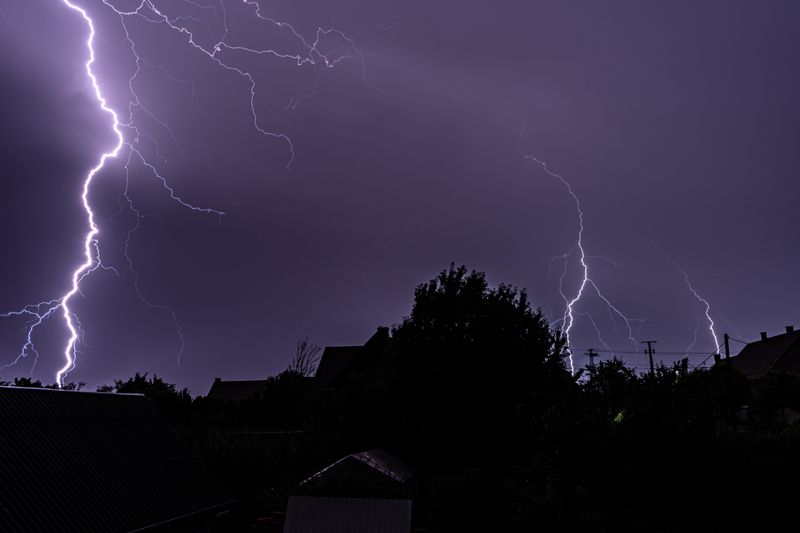**Date:** August 21, 2023
**Author:**
**Keywords:** Rainstorm-DodgerStadium, Deluge, Impact, Resilience, Natural Disaster
—
Los Angeles’ Dodger Stadium, a beloved landmark and home to the Los Angeles Dodgers, has become the latest casualty of Hurricane Hilary. Social media has been flooded with viral photos showcasing the severity of the damage caused by the rainstorm, leaving the ballpark and its surrounding parking lot under several feet of water. As the city grapples with the aftermath of this natural disaster, it is crucial to assess the impact and reflect on the resilience required to rebuild and move forward.
### Assessing the Impact
Situated atop the Chavez Ravine in the Elysian Park neighborhood just north of Downtown Los Angeles, Dodger Stadium found itself in the eye of the storm as Hurricane Hilary unexpectedly set its sights on the beloved ballpark. UCLA climate scientist, Daniel Swain, revealed that the rainstorm lingered directly over Dodger Stadium, leading to a record-breaking 2.3 inches of rain in the area.
The consequences of this deluge were captured in heart-wrenching photos that have since gone viral on social media. The stadium, usually a symbol of excitement and triumph, now stands as a testament to the power and unpredictability of nature. The entire area surrounding Dodger Stadium became submerged in standing water, leaving the status of the field and ballpark facilities in doubt. The Los Angeles Dodgers have yet to release an official statement regarding the situation, leaving fans and supporters anxious for updates.
Adding to the series of unfortunate events, a 5.1 magnitude earthquake originating in Ojai, approximately 60 miles northwest of Dodger Stadium, occurred on the same day. Although unrelated to the rainstorm, this seismic event compounds the challenges faced by the city and its landmark stadium.
### Reflecting on Resilience
Natural disasters like Hurricane Hilary not only test the physical infrastructure of a city but also its resilience as a community. The flooded Dodger Stadium serves as a stark reminder that no entity, no matter its influence or reputation, is impervious to the forces of nature. However, it is in the face of such adversity that the true strength and spirit of a community are revealed.
Los Angeles and its inhabitants have faced and overcome numerous challenges throughout their history. From earthquakes and wildfires to droughts and now rainstorms, the city has proven time and time again its ability to rally, recover, and rebuild. Dodger Stadium, as an emblem of this city’s resilience, will undoubtedly rise again, serving as a testament to the unwavering determination of its people.
### Moving Forward
As the Los Angeles Dodgers focus on their upcoming away games, the road to recovery for Dodger Stadium begins. While it remains uncertain when the team will be able to return to their home field, it is crucial for the organization and the city to collaborate closely in assessing and addressing the damage.
The Dodgers hold a special place in the hearts of fans across the globe, and the restoration and reopening of Dodger Stadium will undoubtedly serve as a symbol of hope and unity. It is essential for the team to keep their loyal supporters updated on the progress made and the plans for the future.
Beyond Dodger Stadium, this incident should serve as a wake-up call for all communities vulnerable to natural disasters. Climate change continues to exacerbate the frequency and intensity of these events, making preparation and resilience imperative. Cities must invest in infrastructure and disaster management strategies that prioritize both prevention and recovery.
In times of crisis, it is through unity, resilience, and determined action that communities can overcome the most daunting challenges. The flooded Dodger Stadium stands as a stark reminder that even the most iconic landmarks can succumb to the forces of nature. However, it is the response in the aftermath that will define Los Angeles and its capacity to weather the storm – both metaphorically and literally.
—
* is a current affairs commentator and writer for the New York Times’ Opinion section. His work covers an array of topics, including politics, social issues, and cultural phenomena. Felsenthal brings a critical and thought-provoking perspective to current events.*

<< photo by Nikolett Emmert >>
The image is for illustrative purposes only and does not depict the actual situation.
You might want to read !
- “Flooded Field Frenzy: Dodger Stadium’s Watery Woes Prompt Speculation”
- ‘The Winter King’ Review: A Lackluster Adaptation of King Arthur’s Legacy
- Bracing for Dual Disasters: California Quake and Approaching Hurricane Hilary
- “Tropical Storm Hilary Approaches Southern California: Is the West Coast Prepared for Extreme Weather?”
- Earthquake Strikes Ojai: Assessing the Impact on Ventura County
- NFL Week 15 Marred by Unfortunate Injury to Bills’ Tommy Doyle
- How prepared is California for the next big earthquake?
- Tropical Storm Hilary Threatens Both Mexico and U.S. Coast
(Note: The question was not provided, so the new title is based on the information given)




